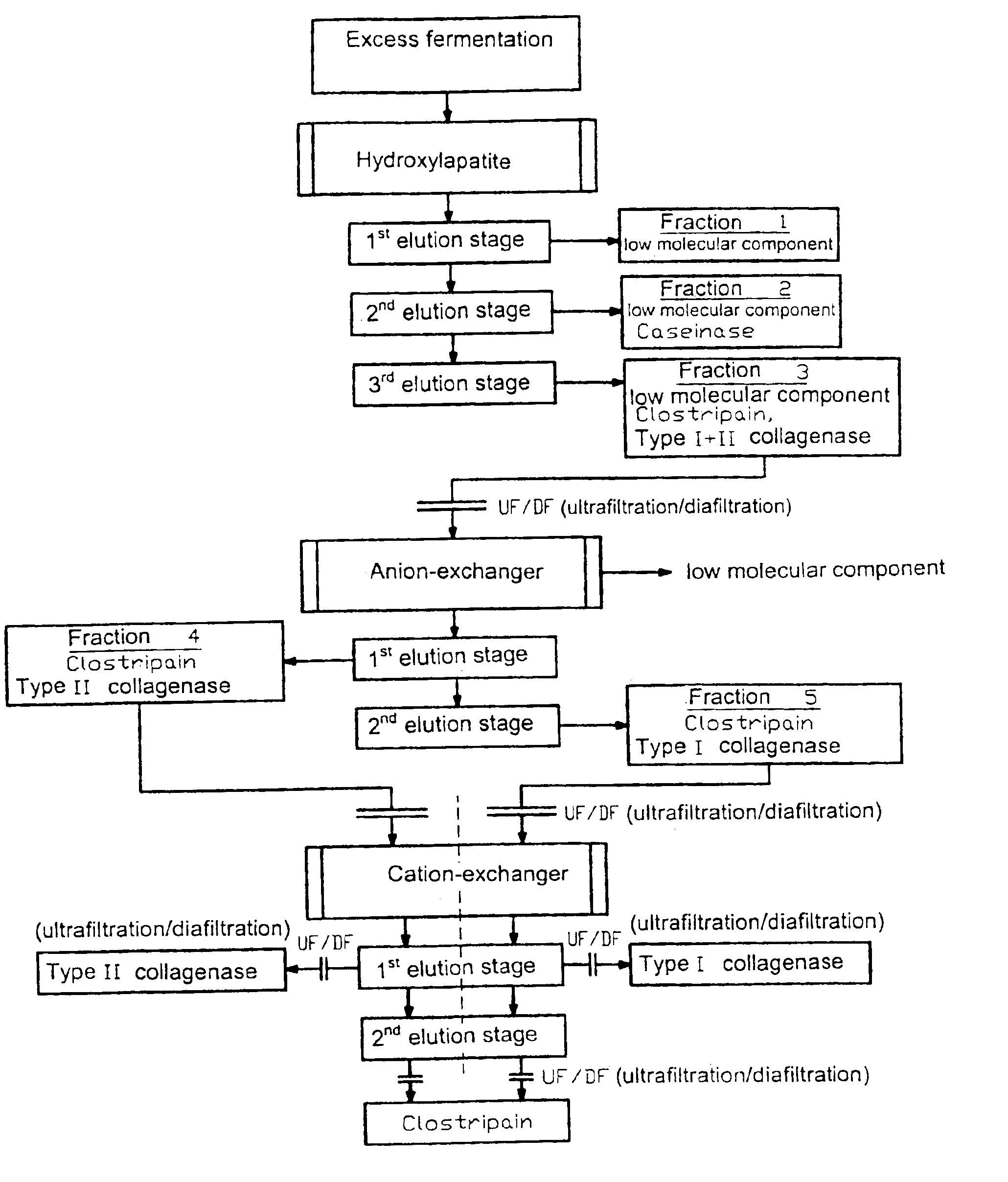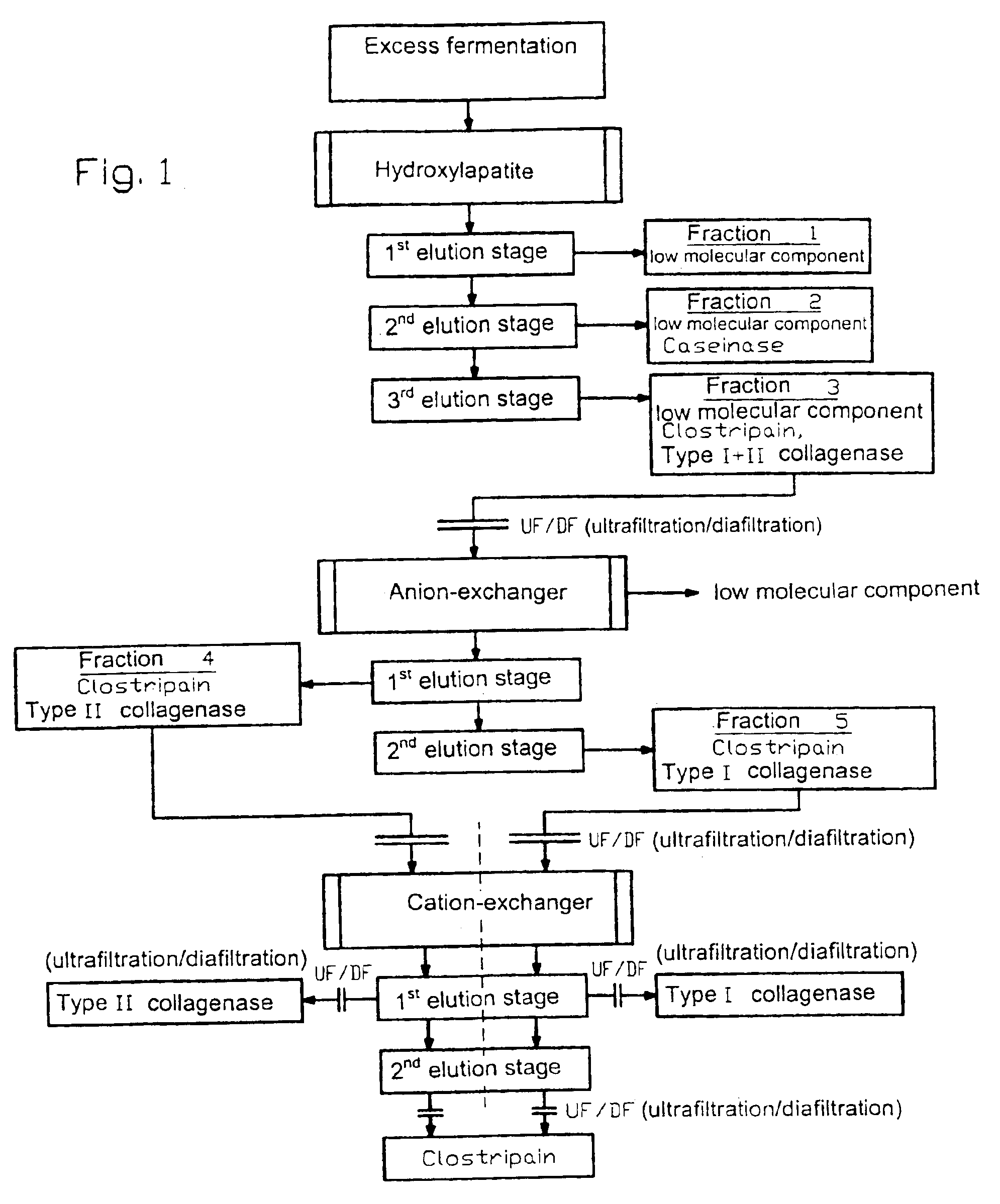Method for purifying enzymes from clostridium histolyticum using multi-stage chromatography
a clostridium histolyticum and enzyme technology, applied in the field of enzyme purification of clostridium histolyticum using multi-stage chromatography, can solve the problems of affecting the purification efficiency of clostridium histolyticum, so as to achieve fast and cost-saving enzyme purification, high flow rate and strong bond
- Summary
- Abstract
- Description
- Claims
- Application Information
AI Technical Summary
Benefits of technology
Problems solved by technology
Method used
Image
Examples
embodiment
[0020]A culture of Clostridium histolyticum is fermented by using an animal or vegetable nutrient medium in liquid culture according to standard methods up to a desired cell density. After separation of the cells with usual methods, for example by centrifugation or filtration, 2000 mL of the concentrated excess fermentation are pumped with a linear flow rate of 300 cm / h onto a chromatography column filled with 1700 mL type I ceramic hydroxylapatite. The components bound to the hydroxylapatite column are eluted at 20 to 25° C. with a linear flow rate of 300 cm / h in three stages with a phosphate buffer, whereby the phosphate concentration is gradually increased. In the first elution stage, the elution takes place with approximately 10 CV (column volumes) with 10 mM phosphate buffer / 100 mM NaCl are eluted with approximately 3 CV and the fraction 2 is obtained which contains caseinase and also low molecular weight components. For the third elution stage, 200 mM phosphate buffer / 100 mM N...
PUM
| Property | Measurement | Unit |
|---|---|---|
| temperature | aaaaa | aaaaa |
| temperature | aaaaa | aaaaa |
| temperatures | aaaaa | aaaaa |
Abstract
Description
Claims
Application Information
 Login to View More
Login to View More - R&D
- Intellectual Property
- Life Sciences
- Materials
- Tech Scout
- Unparalleled Data Quality
- Higher Quality Content
- 60% Fewer Hallucinations
Browse by: Latest US Patents, China's latest patents, Technical Efficacy Thesaurus, Application Domain, Technology Topic, Popular Technical Reports.
© 2025 PatSnap. All rights reserved.Legal|Privacy policy|Modern Slavery Act Transparency Statement|Sitemap|About US| Contact US: help@patsnap.com


